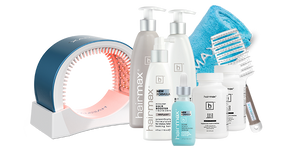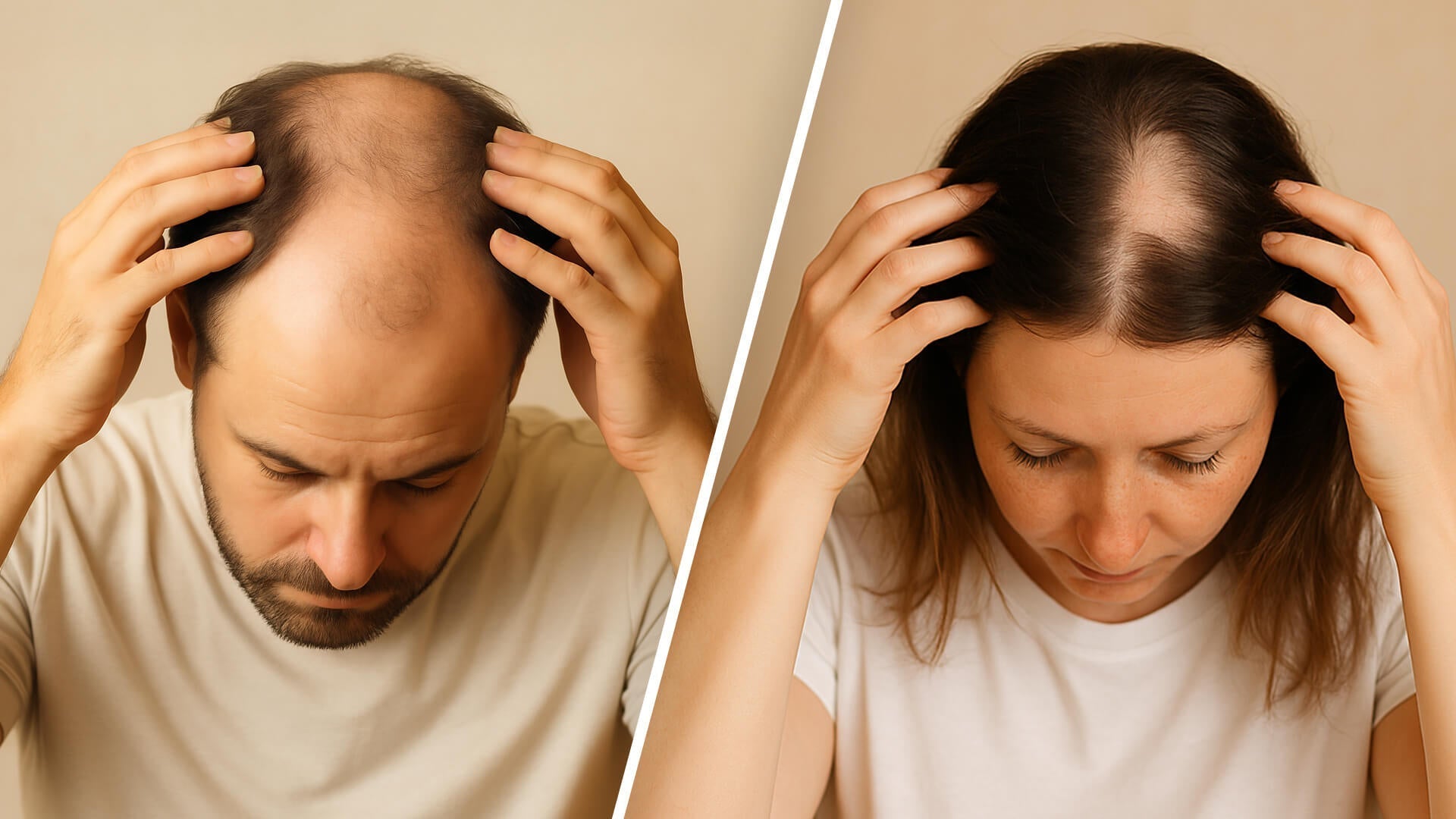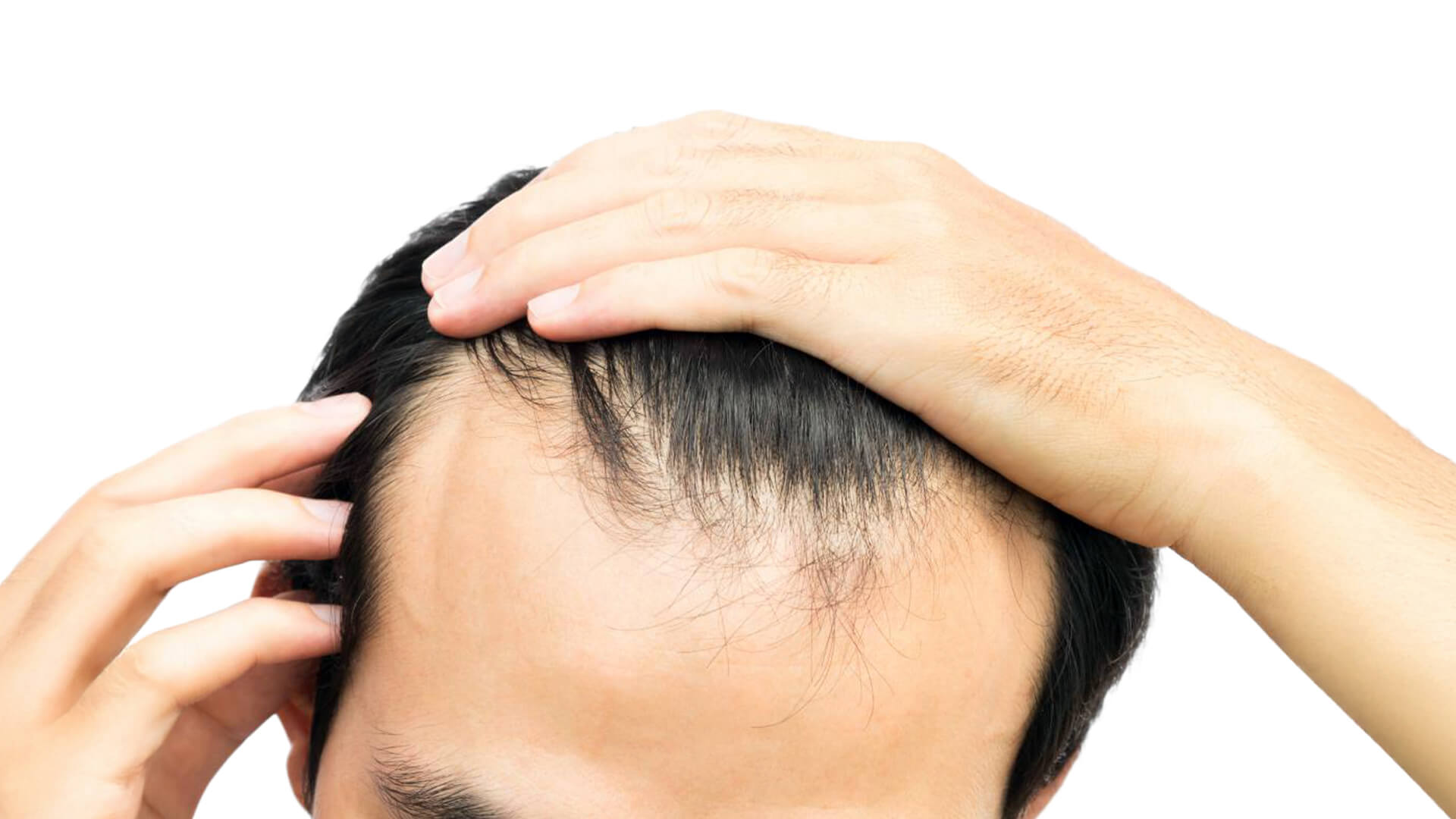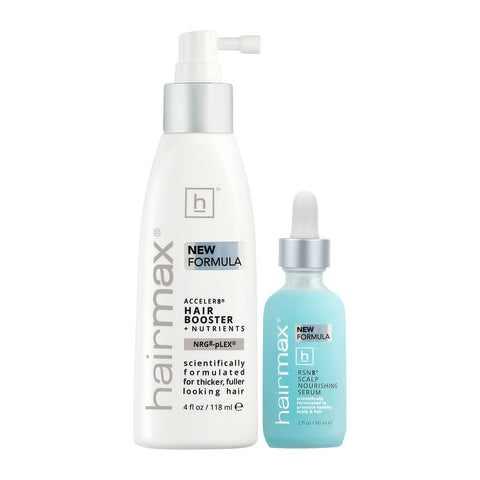Hair Loss and Menopause
Hair loss is a common and upsetting symptom of menopause. Losing your hair can be a devastating experience and significantly impact your self-confidence and self-esteem.
Taking the time to understand why menopausal hair loss occurs and being aware of treatment options can help you take action to treat this condition and help restore your hair health.
What is menopausal hair loss?
Many people assume that androgenetic alopecia or pattern hair loss is a condition that mostly affects men, but what is less well known is that all women experience some degree of hair loss and thinning.
Where about 10% of premenopausal women show evidence of androgenetic alopecia, age increases the odds of being affected by this condition. In fact, as many as 50% to 75% of women 65 years or older suffer from androgenetic alopecia [1] [2].
The most common sign of female pattern hair loss is noticeable hair thinning at the part line, which then progresses to “diffuse” hair loss – where the scalp can be seen through the hair all over the head. Unlike men with male pattern baldness, women see an overall thinning of their hair without a receding hairline. However, while hair loss during menopause in women can sometimes be severe, it rarely results in complete baldness.
What causes menopausal hair loss?
Research suggests that postmenopausal hair loss is the result of a hormonal imbalance. Specifically, it’s related to a lowered production of estrogen and progesterone. These hormones help hair grow faster and stay on your head for longer periods of time. When the levels of estrogen and progesterone drop, hair grows more slowly and becomes much thinner.
Estrogen is not the only hormone that comes into play with the issue of menopausal hair loss. Testosterone (which women have in minute quantities in their body) converts to dihydrotestosterone or DHT. DHT binds to hair follicles and forces them to go into the “resting” phase, or telogen phase. This interrupts the hair growth cycle by shrinking hair follicles and causing them to grow fine, wispy, vellus hair instead of normal hair.
Since postmenopausal hair loss can affect a woman’s self-esteem and feelings of self-worth, it is vital to know that it can be dealt with successfully.
How do you treat menopausal hair loss?
There is only one non-drug option that is FDA Cleared to treat female pattern hair loss and promote hair growth without harmful side effects – Hairmax laser hair growth devices. Besides an assortment of oral and topical drugs, the only FDA approved drug option for women is minoxidil, which can actually cause excessive hair growth in unwanted places.
- Hairmax laser devices – Hairmax laser devices are FDA cleared, home-use laser phototherapy medical devices which are easy and convenient to use, requiring treatment just 3 times a week.
Hairmax laser treatments work through the process of Photobiostimulation, delivering low level laser therapy (LLLT) to your hair follicles to activate them for stronger hair growth. This boost of laser light encourages more blood flow to the follicles, bringing in more oxygen and nutrients, activating antioxidant defenses, and speeding up the elimination of waste products such as DHT.
Depending on the type of device treatment time ranges from as little as 90 seconds (LaserBand) up to 15 minutes (LaserComb and PowerFlex devices).
With 8 FDA Clearances to date, Hairmax has extensive clinical proof of efficacy for the treatment of androgenetic alopecia [4] and the promotion of hair growth in both men and women*. In a recent 26-week clinical study involving 81 women with an average age of 49 years old, 100% regrew hair and had an average increase of 85% more hair growth than that of the control device [1].
- Minoxidil – Minoxidil is an over-the-counter drug that is FDA approved for the treatment of androgenetic alopecia in men and women. It comes as a liquid or foam that you rub into your scalp twice daily to grow hair and to prevent further loss. This can be messy and time consuming and can cause the growth of facial hair in women if it runs onto their face.
- Oral Drugs – There are also a number of drugs used to treat female pattern hair loss which are not FDA approved for treatment. However, these drugs can have a number of side effects, of which some can be quite serious! Using this kind of alternative medications to treat postmenopausal hair loss can end up causing unexpected symptoms.
If you are looking for an effective, non-drug treatment option for menopausal hair loss, Hairmax laser devices are the ideal first-line choice as they have been proven safe and effective without any harmful side effects, unlike drugs often used to treat the condition.
Hairmax laser therapy can not only help regrow lost hair but can also help prevent further progression of hair loss, and can help to positively restore your feelings of self-value by improving your emotional well-being and enhancing your quality of life.
Sources
[1] https://link.springer.com/content/pdf/10.1007%2Fs40257-013-0060-6.pdf
[2] Norwood OT. Incidence of female androgenetic alopecia (female pattern alopecia). Dermatol Surg. 2001 Jan;27(1):53-4.
[3] https://www.webmd.com/skin-problems-and-treatments/hair-loss/hair-loss-treatments#2
[4] https://hairmax.com/pages/clinical-research-results
* Hairmax Laser Devices are indicated to promote hair growth in males with Androgenetic alopecia who have Norwood-Hamilton Classifications of Ila - V, and in females with Androgenetic alopecia who have Ludwig (Savin) Classifications I - II or frontal patterns of hair loss and who both have Fitzpatrick Skin Types I - IV.












